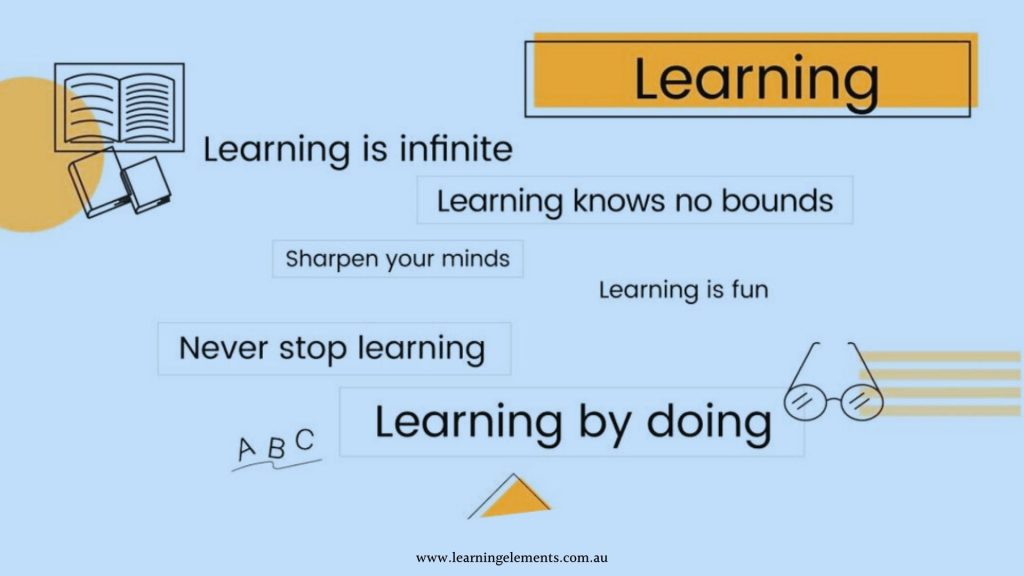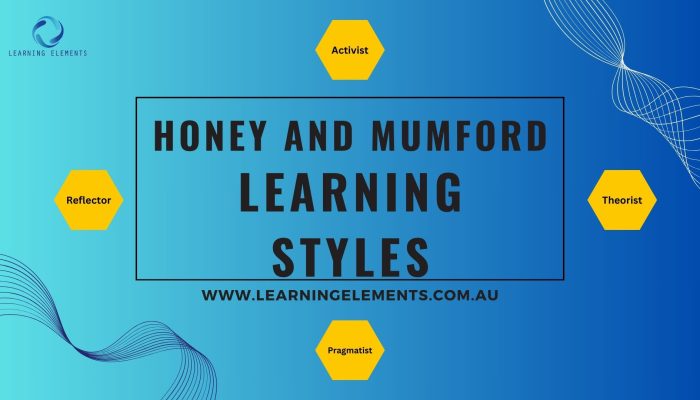Learning Styles Honey and Mumford
Understanding how we learn can significantly improve our educational experiences and personal growth. The Honey and Mumford Learning Styles model identifies four distinct styles, each of which offers unique strengths and approaches to learning. By recognising and adapting to these styles, learners can enhance their learning efficiency and effectiveness. This model encourages personalised learning experiences, leading to better retention and application of knowledge. Whether you are an educator seeking to tailor your teaching methods or a learner aiming to optimise your study strategies, understanding these learning styles can provide valuable insights and foster a more inclusive and supportive learning environment. Keep reading to discover how these styles can transform your approach to learning and development.
What Are Honey and Mumford Learning Styles?
In the 1980s, Peter Honey and Alan Mumford developed a model categorising different learning styles into four types: Activists, Reflectors, Theorists, and Pragmatists. Each style represents a unique way of processing and engaging with information, helping individuals identify and leverage their preferred methods for more effective learning. This model enhances understanding and caters to different learning preferences, thereby improving educational outcomes and personal development. Each style has its own strengths and weaknesses, providing a comprehensive approach to learning.
While Honey and Mumford’s model is a valuable tool for understanding how we learn, it is just one of many approaches to categorising learning styles. Other well-known models include the VARK model, which identifies Visual, Auditory, Reading/Writing, and Kinaesthetic learners, and Kolb’s Experiential Learning Theory, which emphasises concrete experiences and active experimentation. By recognising the variety of these models, we can see how Honey and Mumford’s approach fits into the broader field of education. This understanding helps us use the strengths of different frameworks to create a more complete and inclusive way of learning.
Concept and Benefits of Honey and Mumford Learning Styles
The Honey and Mumford model breaks down learning into four styles: Activists are hands-on learners who thrive on new experiences and challenges. They prefer to dive into activities and learn best through direct involvement. Reflectors prefer to observe and think deeply about their experiences. They like to gather information from different perspectives before coming to a conclusion. Theorists are logical and systematic. They like to understand the underlying concepts and theories that explain why things happen. Pragmatists are practical and like to see how things work in real life. They are keen on applying what they’ve learned to solve problems and achieve results.
The Four Learning Styles
- Reflector Learning Style
- Activist Learning Style
- Theorist Learning Style
- Pragmatist Learning Style
Each style offers different strengths and is suited to different learning situations.
Reflector Learning Style
Characteristics
Reflectors prefer to observe and think carefully before acting. They like to collect information, consider various perspectives, and ponder over their experiences.
Reflectors tend to make well-considered decisions and are good at analysing situations from multiple angles. They are thorough and methodical, which helps them understand complex issues deeply.
Best Practices for Reflectors
- Take your time to gather information and reflect on it.
- Create detailed notes and review them regularly.
- Engage in discussions to listen to different viewpoints.
Activist Learning Style
Characteristics
Activists learn by doing. They thrive on new experiences and challenges, and they enjoy being involved in dynamic activities.
Activists are energetic and enthusiastic, often bringing a fresh perspective to the table. They excel in brainstorming sessions and hands-on projects.
Best Practices for Activists
- Participate in group activities and practical exercises.
- Seek out new challenges and opportunities to learn by doing.
- Reflect on your experiences to consolidate your learning.
Theorist Learning Style
Characteristics
Theorists like to understand the theory behind actions. They prefer logical, rational, and objective analysis and enjoy exploring complex ideas and concepts.
Theorists excel at creating models and frameworks that explain their observations. They are systematic and precise, which aids in developing clear, logical conclusions.
Best Practices for Theorists
- Engage with theoretical materials and abstract concepts.
- Use models and frameworks to structure your learning.
- Challenge assumptions and explore different theories.
Pragmatist Learning Style
Characteristics
Pragmatists are practical and down-to-earth learners. They enjoy applying ideas in real-world situations and solving problems.
Pragmatists are good at testing theories and applying their learning to practical problems. They are focused on results and efficiency.
Best Practices for Pragmatists
- Apply your learning to practical tasks and real-life situations.
- Focus on problem-solving and achieving tangible results.
- Seek feedback to improve your practical application of ideas.
Learning Styles Through Practical Examples
To better grasp how these learning styles manifest in practice, consider the following scenarios. An Activist, drawn to new experiences, might excel in a workshop that involves hands-on activities and group discussions. In contrast, a Reflector would benefit from a seminar that allows for observation and thoughtful analysis of the subject matter. A Theorist would engage deeply with a lecture that delves into underlying principles and frameworks, while a Pragmatist would thrive in a session that involves problem-solving tasks, where they can immediately apply their learning to real-world challenges. These examples illustrate how recognising and accommodating different learning styles can lead to more effective education.
Enhance Your Learning Experience by Contacting The Learning Elements Team Today!

How to Identify Your Learning Style
Understanding your learning style can help you tailor your learning experiences. Here are some tips:
- Reflect on past learning experiences and identify what worked best.
- Use learning style assessments and questionnaires.
- Seek feedback from peers and educators.
Applying Honey and Mumford’s Model in Modern Education
In today’s diverse educational settings, particularly with the rise of online and hybrid learning environments, the application of Honey and Mumford’s learning styles has become increasingly relevant. Educators are now leveraging this model to design courses that address the varied needs of learners, ensuring that each style—whether Activist, Reflector, Theorist, or Pragmatist—is catered for. For instance, online platforms might incorporate interactive elements for Activists, reflective journals for Reflectors, structured modules for Theorists, and practical simulations for Pragmatists. This adaptability enhances the learning experience, making education more accessible and effective for all students.
Adapting Teaching Methods to Learning Styles Honey and Mumford
Educators can enhance learning outcomes by adapting their teaching methods to different learning styles. Here are some strategies:
- Use a mix of teaching methods to cater to different styles.
- Incorporate activities that engage each learning style.
- Provide opportunities for reflection, practical application, and theoretical exploration.
Benefits of Understanding Learning Styles
Recognising and adapting to learning styles can lead to improved learning outcomes and personal development. It helps learners become more self-aware and proactive in their education.
Maximising Learning Through Personalised Strategies
For learners, understanding their own learning style can significantly enhance their study strategies and overall educational experience. By identifying whether they are more inclined towards activism, reflection, theory, or pragmatism, learners can tailor their approach to maximise retention and comprehension. Educators, too, can benefit by assessing the learning styles of their students, allowing them to personalise instruction and provide targeted support. This alignment between teaching and learning styles fosters a more engaging and productive educational environment where each student is empowered to achieve their full potential.

Recognising the Limitations of Learning Styles
While the Honey and Mumford learning styles model offers valuable insights, it is important to recognise that it is not a one-size-fits-all solution. Learning styles are just one aspect of the complex process of education. Other factors, such as motivation, prior knowledge, and the learning environment, also play crucial roles in determining educational success. Therefore, while it is beneficial to understand and apply learning styles, they should be used in conjunction with other educational strategies to ensure a comprehensive and balanced approach to learning. This broader perspective helps create more adaptive and resilient learners.
Frequently Asked Questions
- What are the main learning styles identified by Honey and Mumford?
- Reflector, Activist, Theorist, and Pragmatist.
- How can I identify my learning style?
- Reflect on your learning experiences, use assessments, and seek feedback.
- Can my learning style change over time?
- Yes, learning styles can evolve as you gain more experiences and insights.
Conclusion
Understanding Honey and Mumford’s learning styles can significantly enhance learning experiences. By recognising your preferred style and adapting your approach, you can become a more effective learner. Educators can also benefit by tailoring their teaching methods to accommodate different styles.
Book a consultation with us today. Our experts will help you identify the best learning styles and training solutions tailored to your specific needs and goals.

